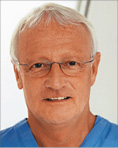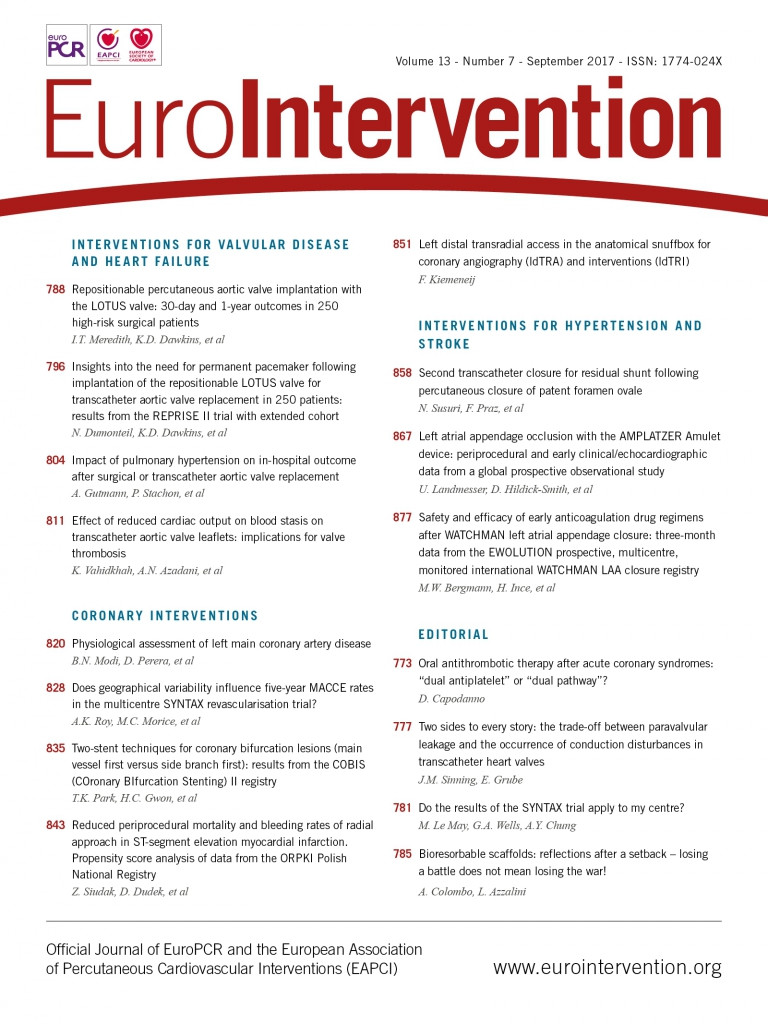
This year, we are celebrating the 15th anniversary of the first transcatheter aortic valve implantation (TAVI). Several randomised trials paved the way for TAVI which has now become the new standard of care for high and intermediate surgical risk patients with non-inferior outcome compared to surgical aortic valve replacement (SAVR)1,2.
Increasing operator experience, better patient selection, and clinical best practice recommendations have helped to optimise procedural results. However, this development would never have been successful without design modifications of the existing devices and the introduction of so-called next-generation transcatheter heart valves (THV)3.
The LOTUS™ aortic valve (Boston Scientific, Marlborough, MA, USA) was CE marked in 2013 and has so far been a promising “new kid on the block” but was withdrawn from the market in February 2017. This THV is a fully repositionable, mechanically expandable device with a paravalvular sealing mechanism to reduce further the degree of paravalvular leakage (PVL)4.
With their analyses of the REPRISE II Extended Cohort (consisting of 250 high surgical risk patients) in this issue of EuroIntervention, Meredith et al5 and Dumonteil et al6 show that the LOTUS valve leads to good clinical outcomes at 30 days and at one year with minimal PVL (1.8% moderate/severe PVL). However, this very low degree of PVL comes at the price of a significantly higher occurrence of conduction disturbances (CD) that required the implantation of a permanent pacemaker (PPM) in 36.0% of the patients.
These results are confirmed by the recently published RESPOND registry analysing outcomes of 996 LOTUS patients with a 30-day PPM implantation rate of 34.7% in pacemaker-naïve patients. The rate of PVL was the lowest ever reported (in 92% of patients PVL was trace or absent, 0.3% had moderate PVL) in this large registry7.
We already know from several TAVI studies that appropriate oversizing prevents the development of relevant PVL8,9. However, as radial force exerted by the prosthetic valve increases (whether by increasing valve size or by the addition of a paravalvular sealing skirt or cuff), the incidence of PVL decreases but also the occurrence of CD increases due to compression of the conduction system tissue itself. Hence, this inverse relationship between PVL and CD may indicate a trade-off in the choice of valve size between the potential development of PVL and the requirement for a new PPM6. Furthermore, the association between implant depth and new CD is firmly established and may be explained by the physical interaction of the ventricular aspect of the prosthesis stent frame with the conduction system10,11.
In the REPRISE II Extended Cohort, Dumonteil et al found that overstretch, particularly of the left ventricular outflow tract (LVOT), was significantly and independently associated with increased need for PPM implantation with the LOTUS valve6. Although the authors found only a trend towards a significantly lower PPM implantation rate in patients with a more shallow depth of implantation (≤5 mm), this might also have contributed to the high pacemaker implantation rate which varied considerably between centres. Nonetheless, Meredith et al showed that the LOTUS valve leads to very good haemodynamics with a very low degree of PVL5.
Recent data suggest that measures can be taken to achieve a lower PPM rate with the LOTUS valve, such as an expanded prosthesis size matrix which may help to avoid CD related to valve oversizing, and implanting the valve in a higher position with Depth Guard™ technology (Boston Scientific) to reduce the interaction of the prosthesis frame with the conduction system and the LVOT during deployment7.
Only when these measures have been taken will we be able to assess whether there are still “two sides to the LOTUS story” or whether the trade-off between PVL and the occurrence of CD will be less pronounced with the re-introduction of the revised LOTUS valve generation.
Conflict of interest statement
J-M. Sinning has received speaker honoraria and research grants from Medtronic, Edwards Lifesciences and Boston Scientific. E. Grube is a proctor for Medtronic and Boston Scientific and has received speaker honoraria from Medtronic and Boston Scientific.

